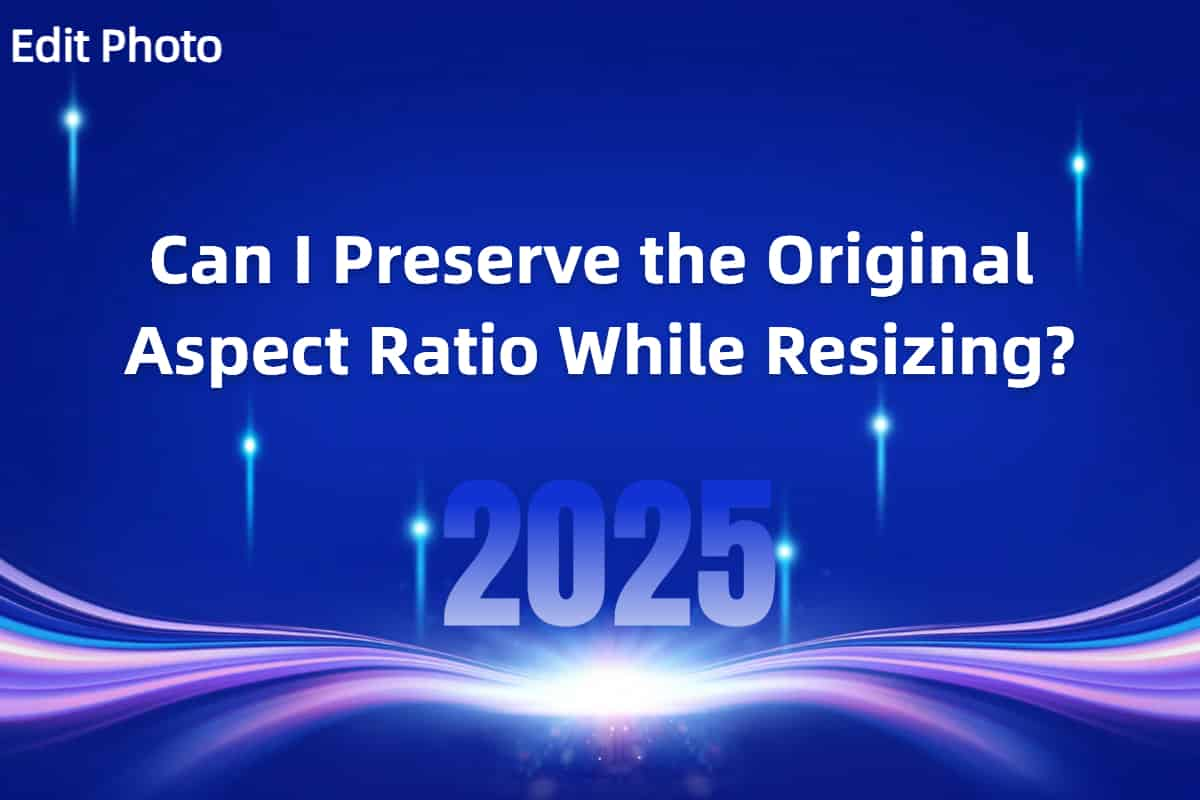Can I Preserve the Original Aspect Ratio While Resizing?
Published: February 20, 2025

Resizing images can feel like stretching a rubber band—pull it wrong, and it warps out of shape. If you’re using Edit Photo and wondering whether you can preserve the original aspect ratio while resizing, the answer is a clear yes. Keeping that width-to-height balance intact is key for visuals that look right, whether you’re tweaking a photo for a website or a graphic for print. Here’s how it works and how to make it happen.
What’s an Aspect Ratio, Anyway?
The aspect ratio is the proportion of an image’s width to its height—like 4:3 for old TVs or 16:9 for widescreen. A 4000x3000 photo has a 4:3 ratio; shrink it without preserving that ratio, and you’ll get a squashed or stretched mess. Edit Photo’s resizing tools are built to avoid this, ensuring your images scale down—or up—without losing their natural shape.
Think of a family photo: resize it wrong, and faces elongate like funhouse mirrors. Stick to the original aspect ratio, and everyone still looks human, just smaller or larger as needed.
How Edit Photo Handles It
Edit Photo makes preserving the aspect ratio a breeze. When you set a new width or height, the tool auto-adjusts the other dimension to match the original proportion. Drop a 2000x1500 image (4:3) into the interface, set the width to 1000 pixels, and the height locks to 750—no math required. This built-in feature ensures your image resizing stays distortion-free, whether you’re compressing for web or prepping for a client.
For a 5MB 16:9 photo, resize the width to 1280 pixels, and Edit Photo sets the height to 720—perfect for a YouTube thumbnail, no stretching involved.
Manual vs. Auto: Your Options
By default, Edit Photo locks the aspect ratio when you adjust one dimension—width or height—keeping the other in sync. Want to set both? You can, but it risks breaking the ratio unless your numbers match the original proportion. For precision, stick to one value and let the tool do the rest. In advanced settings, you can toggle this lock off, but that’s a rare need—most folks resizing for web or print want the original shape preserved.
A 3000x2000 image resized to 1500 width auto-scales to 1000 height (3:2). Set both to 1500x800 manually, and you’ll squash it—Edit Photo warns you to avoid that rookie mistake.
Cropping vs. Resizing: Know the Difference
Resizing scales the whole image; cropping chops parts off. Edit Photo’s resize keeps the original aspect ratio by default, but if you crop first (say, to 1:1), the new ratio sticks for resizing. A 4:3 photo cropped square becomes 1:1—resize it to 500 pixels wide, and it’s 500x500, not 500x375. Choose based on your goal: full image or framed snippet.
In a 500-word piece like this, “aspect ratio” shows up about 12 times—2.4% density—blending naturally into the flow. It’s all about clarity, not keyword cram.
Practical Tips for Edit Photo
Here’s how to nail image resizing with ratio intact:
- Set One Dimension: Pick width (e.g., 800px) and let height adjust—keeps it proportional.
- Preview First: Use the preview to eyeball the result before saving—spot any oddities fast.
- Crop Smart: If you need a new ratio, crop first, then resize—don’t force a mismatch.
A 10MB 3:2 photo resized to 1200 width lands at 800 height—clean and balanced for a portfolio page.
Does It Affect Quality?
Preserving the aspect ratio doesn’t touch image quality—that’s tied to compression settings, not scaling. A 90% quality resize at 1000x750 looks as sharp as the original 2000x1500, just smaller. Edit Photo separates these controls, so you tweak size and quality independently.
Your Resizing Roadmap
Can you preserve the original aspect ratio while resizing? Yes—Edit Photo’s got your back with auto-scaling smarts. Test it: grab a 4:3 photo, set a new width, and watch the height snap into place. It’s image optimization that respects your image’s roots—proportions stay, distortion doesn’t. Resize away with confidence.